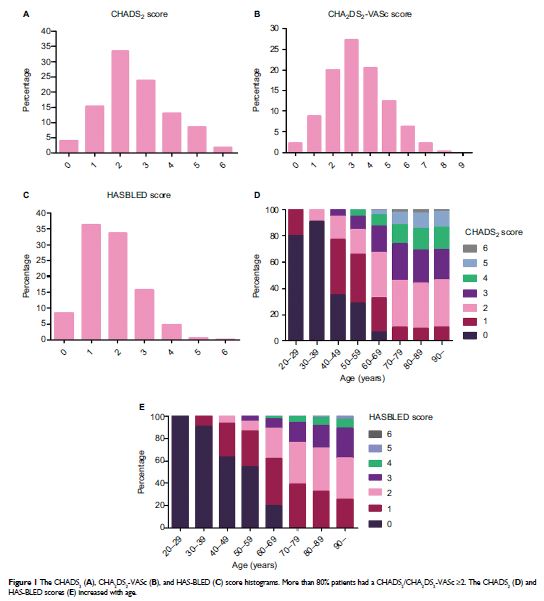108384
论文已发表
注册即可获取德孚的最新动态
IF 收录期刊
- 3.4 Breast Cancer (Dove Med Press)
- 3.2 Clin Epidemiol
- 2.6 Cancer Manag Res
- 2.9 Infect Drug Resist
- 3.7 Clin Interv Aging
- 5.1 Drug Des Dev Ther
- 3.1 Int J Chronic Obstr
- 6.6 Int J Nanomed
- 2.6 Int J Women's Health
- 2.9 Neuropsych Dis Treat
- 2.8 OncoTargets Ther
- 2.0 Patient Prefer Adher
- 2.2 Ther Clin Risk Manag
- 2.5 J Pain Res
- 3.0 Diabet Metab Synd Ob
- 3.2 Psychol Res Behav Ma
- 3.4 Nat Sci Sleep
- 1.8 Pharmgenomics Pers Med
- 2.0 Risk Manag Healthc Policy
- 4.1 J Inflamm Res
- 2.0 Int J Gen Med
- 3.4 J Hepatocell Carcinoma
- 3.0 J Asthma Allergy
- 2.2 Clin Cosmet Investig Dermatol
- 2.4 J Multidiscip Healthc

中国西南地区非瓣膜性房颤住院患者的抗凝药物使用情况
Authors Zheng HJ, Ouyang SK, Zhao Y, Lu K, Luo SX, Xiao H
Received 17 November 2016
Accepted for publication 28 December 2016
Published 3 March 2017 Volume 2017:10 Pages 69—77
DOI https://doi.org/10.2147/IJGM.S128047
Checked for plagiarism Yes
Review by Single-blind
Peer reviewers approved by Dr Lucy Goodman
Peer reviewer comments 2
Editor who approved publication: Dr Scott Fraser
Background: Oral anticoagulants (OACs) are effective for the prophylaxis of stroke
in patients with atrial fibrillation (AF). This cross-sectional study aimed to
investigate the status of anticoagulation treatment for hospitalized AF
patients in Southwest China.
Methods: A total of 4760 hospitalized patients with AF were
enrolled from 21 hospitals in Chongqing city from January 1 to December 31,
2013.
Results: Among the enrolled patients, 3785 were diagnosed with
nonvalvular AF. These patients had a mean age of 74.4±10.1 years. The mean
CHADS2 score
of all subjects was 2.60±1.34, and 80.7% of the patients had CHADS2 ≥2.
The use rate of OACs was only 11.5% for patients with a high risk for stroke
(CHADS2 ≥2)
and was much lower in patients from the second-level hospitals than in patients
from the third-level hospitals (5.8% vs. 16.9%, P <0.001). The
leading reason for the underuse of OACs in high-risk patients was physician’s
nonfeasance.
Conclusion: This study demonstrated that the underuse of
anticoagulation therapy in hospitalized patients with nonvalvular AF was
particularly serious in Southwest China, especially in the second-level
hospitals. Urgent and effective measures are desperately needed to improve this
alarming situation in China.
Keywords: atrial fibrillation, anticoagulation
therapy, oral anticoagulant, antiplatelet therapy, international normalized
ratio
